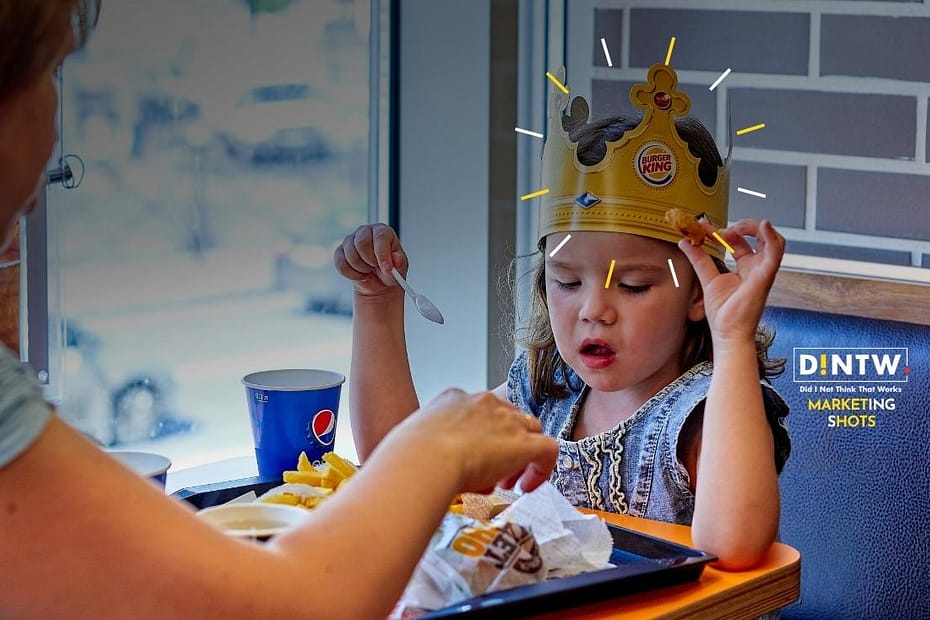One of the best Burger King Ads we saw in 2020 was the legendary ‘mouldy burger’ campaign. In the marketing campaign, the company showed off its ‘natural’ ingredients by showing off its riddled with spores. By the way, after this campaign, Burger King’s sales went up by 14% globally.
What worked for Burger King’s Whopper Ad?
As more people grow concerned about their health, this ad is highly effective. Burger King has taken advantage of the growing market demand for meals that aren’t laden with preservatives, and they’ve done it well.
Even the best-looking aspects of a company might be unappealing to consumers. However, you shouldn’t be afraid to share what is happening behind the hood of your brand to make it appear credible and honest.
Burger King is again in the news.
This time it is the nudge marketing by creating a psychological anchor.


Burger King’s recent eye-catching ad is in the same style – of a different league. Graphics depicting a Burger King paper bag on the front doors imply that consumers may enjoy their beloved Whopper in the comfort of their own homes by using the delivery app. The argument is that “any house has the potential to be the Whopper’s Home!”
These funny marketing shots by Burger King can be seen on digital, print and outdoors mediums in Belgium, Chile, Costa Rica, Germany, Japan, Mexico, and Taiwan.
In London – catch the King at Aldgate East Station.

What is in the ads from a creative angle?
The creative has the right mix of colours and focus. The zoom into the doormat, the door and the usual stuff next to any apartment makes it relatable. The long and neat call to action at the right bottom of the ad is clear and convincing.
We subconsciously connect to experiences exclusive to a brand. Our connection with these subtle affairs is primarily sensory.
For example,
While using the brand – taking photos on the apple phone
Experience it through the product shape – triangle-shaped Tobler Chocolates
Visit a store – Harrods London, product displays are like a piece of art at a painting exhibition
We remember all these subtle experiences.
This Burger King Ad connects with its users through the delivery bag containing the burger placed on the doormat.
Now, the naughtiness.
You would be unable to miss the campaign’s subtle jabs at the two most significant competitors of Burger King. The big daddies of the fast-food business.
The first ad has a red and yellow colour scheme with an umbrella stand that resembles a pack of golden fries and clown shoes on the side – Hello Mcdonald.
The second ad imagines red and white-striped pots containing chicken leg-like trees — is it like KFC ; )
The Kings didn’t mention these facts anywhere, which is not surprising. That’s nudge marketing.
How does the brain respond to these subtle cues?
Does the consumer mind also responds and relate to the subtle cues inserted in the ads? And if it does, does the market tie it back to the Whopper? These are critical questions from the marketing and ROI perspective. It is also an external validation.
To test,
We ran these ads through Whopper fans and used an eye-tracking device to measure their attention and line of sight.
We overlay the heatmap to show warm-to-cool colour spectrums that showcase which ad elements got the most user attention.


Firstly, The heat map depicts the advertisement areas that had the most eye fixations. A fixation is recorded whenever a user stares in a single spot for more than 50 milliseconds, indicating how frequently visitors looked at a specific page element.
Secondly, the map indicates how long they spent looking at a particular piece on the page.
The Burger King Whopper Ad scores neutral to positive for brand recall front and the call to action metrics. As a result, the Burger King Ads are effective and quirky.
We all can agree on one thing. When a Whopper desire strikes, there’s no excuse not to indulge in the delectable Whopper.
The post Burger King Ads seizes the opportunity to (Subtly) snub Rivals. appeared first on DINTW Digital Marketing Shots.

